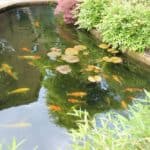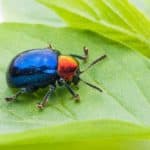As an idea out of the blue, using milk to feed plants through compost and the earth might strike some people as outlandish. But if you think about it for a few moments, the good sense of the idea begins to sink in.
What’s in milk? Everything you need to essentially grow a newborn animal into one that’s strong enough and grown enough to move on to more solid and complex foods.

Proteins in concentrated abundance, natural sugars, enzymes, and amino acids, in a liquid form (milk is 90% water, after all) that breaks down easily to release its elements.
All of that can be used to grow microbes, beneficial bacteria, and even fungi if you use it on your garden soil. Food for the animal, (admittedly stolen) food for the person…food for all the things in soil that help enrich the root-soil of plants.
The point of which is that milk is an organic compound. When it decomposes, it will release its nutrients into the soil and aid the growth of plants.
The trouble is that the same is true of almost any organic compound – including the much more cost-efficient fertilizers already on the market.
A lot of time and effort has been spent in trying to prove that milk has some extraordinary properties when used to grow plants, in particular that it has an exponentially beneficial effect on soil porosity. It has also been claimed that raw milk in particular has additional benefits to the soil and everything that grows in it.
However, there is as yet no peer-reviewed scientific evidence that this is the case. That milk will help nourish soil is beyond question – but so will manure, bone meal, food waste, commercial fertilizer, etc, and with far greater economy.
The raw milk claim in particular appears to have been debunked by the peer-reviewed research of Dr. Sid Bosworth of the University of Vermont, in Raw Waste Milk As A Pasture Amendment.
In that paper, which reported the results of some on-farm experiments undertaken to see whether raw milk met the claims being made for it as an additive to the soil, Dr. Bosworth concluded that “the application of raw milk onto pasture is not an economical means enhancing forage production or forage and soil quality. The meager gains recorded are neither great enough to influence milk production nor consistent enough to be a reliable solution.”
In terms of using milk as an insecticide spray, claims have been made for milk in which it kills insects because “they can’t process milk sugars because they have no pancreas.”
Insects consume sugars all the time, of course, in barks, plants, insects and other creatures – we’re all full of sugars, they’re ultimately what fuel our life processes. And insects consume those sugars perfectly well without a pancreas. So at best, the insecticide claims require future clinical study.
Ultimately then, while there is no dispute that milk will feed the soil onto which it is applied, there remains little if any scientific evidence that it has a uniquely or specially beneficial effect, certainly when compared with existing Nitrogen-rich fertilizers.

Is Baking Soda Good for Plants?
Baking soda, or sodium bicarbonate, has long been recommended by some sources as a safe, effective treatment for the hell that is powdery mildew, and for several other fungal diseases in plants.
Wait – baking soda? The kitchen staple?
Is that true? Is simple baking soda a miracle cure for blighted roses?
The truth appears to be somewhere between skepticism and enthusiasm.
First of all, baking soda appears to do little enough harm that the EPA cleared it as a safe treatment for edible plants after a significant amount of study on its application to plants around the world.
That amount of study was necessary because of the sodium in sodium bicarbonate. Sodium and plants have had a fractious relationship – the sodium can burn leaves, roots, and other parts of plants. So you would think it would have faced an uphill battle for approval. Happily, though, testing proved that there’s little significant build-up in soil treated with baking soda, so the EPA found itself able to pass it as safe.
More than doing no appreciable harm though, research has also revealed that baking soda is an effective treatment for reducing the effects of fungal disease on plants. It’s important to understand where the line of this lies. It fights the effects of fungal growth but doesn’t kill the spores themselves, so it’s in no sense a ‘cure’ for fungus of mildew. It does seem to act as an effective treatment once the fungus is present though.
How does it do that? By a form of chemical warfare. Sodium Bicarbonate appears to work as a fungicide by disrupting the ion balance within the fungal cells. With their ion balance disturbed, the cells collapse. Bye-bye, fungal cells.
Rather than simply scatter neat baking soda over your plants to deal with the effects of powdery mildew – which can result in the foliar burning we described – instead, make up a 1% solution with mostly water, with a little horticultural soap or oil added.
The dilution of the Sodium Bicarbonate in a solution helps mitigate the potential foliar burning effect of Sodium on the leaves, stems, roots, and other plant parts (usually visible as browning and shriveling where it is present).
So, in the short term at least it appears that properly treated (which is to say in a weak solution, mixed horticultural with oil or soap), and applied regularly to plants, baking soda at least does no appreciable harm. It also appears to have the backing of some initial research for its use as a treatment for powdery mildew. It’s not by any means a cure, because as we mentioned, it doesn’t kill the spores themselves.
Though research to pin down the precise levels of effectiveness of baking soda on plants is ongoing, as a treatment against the active fungus at least, the ionic upset it can deal to the fungal growth helps establish baking soda’s place in the fight against fungal contamination of edible plants.






